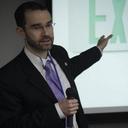Social capital drives resilience
By Daniel P. Aldrich
Wednesday, 11 February 2015
 Many of us continue to envision resilience – the ability of a community to resume the rhythms of daily life following a major shock – in terms of physical infrastructure, aid from donors, and building codes. While those are certainly important aspects of building resilience, a growing body of evidence points instead to the role of social capital and social ties – the connections that we have to people around us. Why does social capital matter?
Many of us continue to envision resilience – the ability of a community to resume the rhythms of daily life following a major shock – in terms of physical infrastructure, aid from donors, and building codes. While those are certainly important aspects of building resilience, a growing body of evidence points instead to the role of social capital and social ties – the connections that we have to people around us. Why does social capital matter?
First, social ties can save lives during disasters. One new study of more than 130 communities during the 11 March 2011 tsunami in Tohoku, Japan shows how towns and villages which had more trust and better ties with each other had lower mortality rates <http://works.bepress.com/daniel_aldrich/27/>
Next, social capital improves survival and recovery after disaster. One work <http:\\https://drive.google.com/file/d/0B69BQ_ewrMs-eElJMl9Bb1laY00/view> on children in post-Haiyan Philippines showed how deeper reservoirs of bonding, bridging, and linking social capital correlated with lower levels of malnutrition. Similarly, a study of the recoveries in Kobe and Gujarat following these earthquakes demonstrated how social capital enhanced collective capacity and rebuilding following these disasters <http://ijmed.org/articles/235/download/>.
Finally, social capital – like other forms of capital – can be deliberately strengthened by NGOs, decision makers, and residents. Several studies underscore field-tested techniques which have proven effective at building social capital around the world <http://works.bepress.com/daniel_aldrich/26/>. One approach involves connecting neighbors to each other through simple programs such as “get to know your neighbor day.” Another technique connects neighbors through social events just as religious festivals, soccer games, and parties.
A completely different to building social capital relies on programs known as time banking or community currency which allow people to do favors and volunteer work but receive something in return. A fourth proven technique involves thought-out community spaces and better designed neighborhoods – public and private spaces can be structured to encourage, not discourage interactions, to build social capital.
As we enter an age when anthropogenic climate change combined with increased coastal urbanization will only increase the number and effect of disasters around the world, we must focus on improving the reservoirs of social capital in vulnerable communities.
Daniel P. Aldrich is University Faculty Scholar and Associate Professor at Purdue University and the author of the book Building Resilience
<http://www.amazon.com/Building-Resilience-Capital-Post-Disaster-Recovery/dp/0226012883> on the role of social capital in disaster recovery along with many other articles which can found at his website <http://works.bepress.com/daniel_aldrich/>
 Many of us continue to envision resilience – the ability of a community to resume the rhythms of daily life following a major shock – in terms of physical infrastructure, aid from donors, and building codes. While those are certainly important aspects of building resilience, a growing body of evidence points instead to the role of social capital and social ties – the connections that we have to people around us. Why does social capital matter?
Many of us continue to envision resilience – the ability of a community to resume the rhythms of daily life following a major shock – in terms of physical infrastructure, aid from donors, and building codes. While those are certainly important aspects of building resilience, a growing body of evidence points instead to the role of social capital and social ties – the connections that we have to people around us. Why does social capital matter?